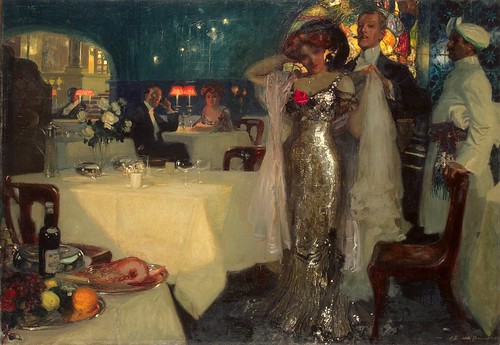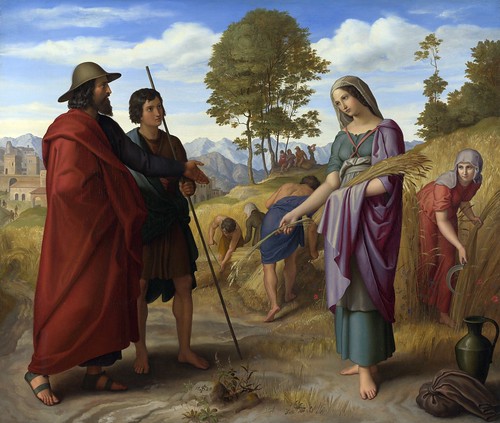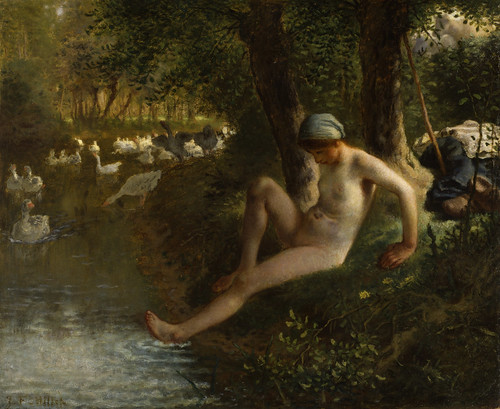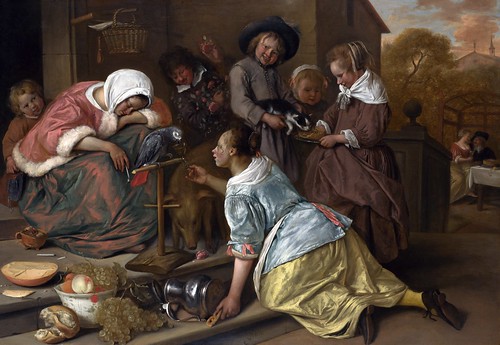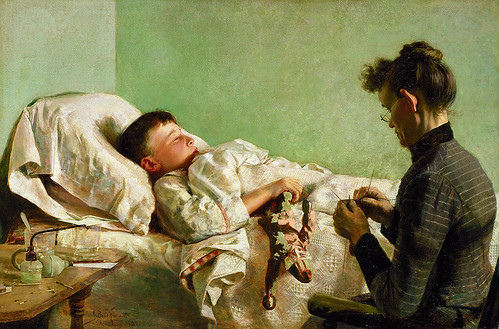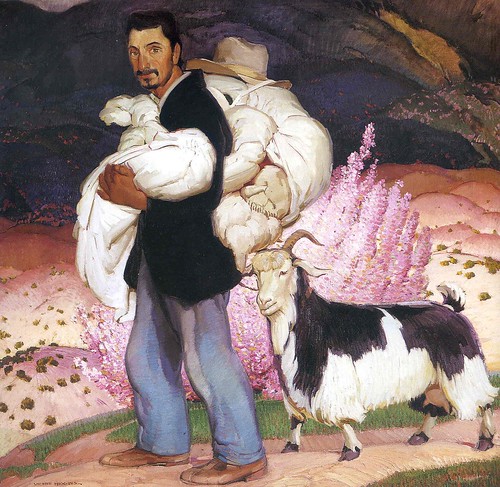William Merritt Chase (American, 1849 – 1916), an influential art teacher and one of the leading exponents of American impressionism, captured the genteel, privileged life of polite society in the 1890s. A Friendly Call, set in Chase's elegant summer house at Shinnecock Hills, Long Island, shows two fashionably dressed women in a large, airy room decorated with prints, paintings, hanging textiles, and a large, gilt-framed mirror. The artist's wife Alice, on the right, listens attentively to her visitor, who is still wearing her hat and gloves and carrying a parasol.
Chase's rendering of light, his facile brushwork, and his choice of everyday subject matter all recall the work of the French impressionists; yet, unlike his European contemporaries, the artist carefully composed his paintings to underscore abstract elements. Simple rectangular patterns of the floor, wall, and couch are echoed in the framed pictures and wall hangings while they are contrasted to the more curvilinear figures, chair, and plump pillows. The mirror framing Mrs. Chase offers a surprising reflection of a wall behind the viewer; Chase's compositional arrangement and his use of reflected imagery suggest that he may have been paying homage to the seventeenth-century Spanish artist Velázquez, whose much-admired painting Las Meninas displays a similarly inventive studio interior.
[Oil on canvas, 76.5 x 122.5 cm]

